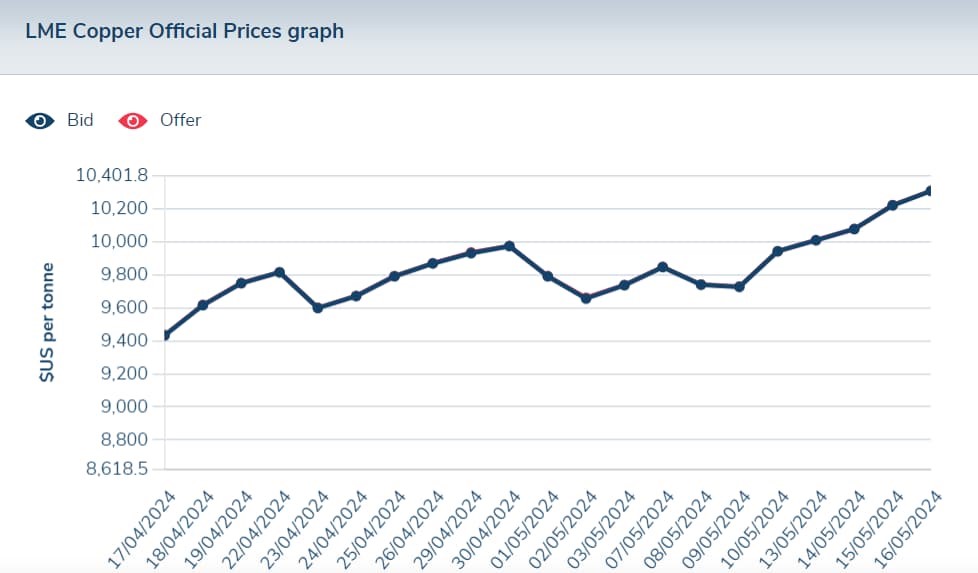Commodity veteran says this asset is the best trade of his career
Copper prices have surged by over 26% since early February on the London Metal Exchange, making it one of the top-performing commodities of the year. This surge is fueled by escalating demand linked to renewable energy projects and electric vehicle (EV) production.
The red metal’s role in green technology and grid infrastructure, coupled with market dynamics and global supply concerns, underpins this substantial price escalation.
Analysts suggest that a mix of speculative buying and genuine supply constraints could signal a robust bullish trend ahead.
Despite these promising indicators, trade data from China—a major player responsible for 40% of global copper imports—shows a moderation in demand. This is evident from a slowdown in copper ore import volumes post-pandemic, indicating that the surge in prices might not be entirely driven by demand factors.
Speculative trading and supply concerns
The recent production halt at Panama’s Cobre mine due to environmental concerns caused some market anxiety. However, overall first-quarter production from major producers increased by 5.5% year-on-year, indicating that global copper supply is relatively stable and not the primary factor behind the price surge.

Speculators have played a significant role in copper’s recent price increase. Data from the U.S. Commodity Futures Trading Commission shows a rise in net long positions for copper, indicating that investors are betting on the metal rather than just closing out short positions. This speculative buying has driven the marginal increase in copper prices.
Jeff Currie’s perspective on Copper
According to commodities veteran Jeff Currie, copper still has more room to run.
In a new episode of the Odd Lots podcast, the chief strategy officer of the energy pathways team at Carlyle Group Inc. says long copper represents “the most compelling trade I have ever seen in my 30-plus years of doing this.”
Currie highlights three structural tailwinds driving copper demand: redistribution policies, environmental policies, and deglobalization. He notes that lower-income groups consume a greater share of commodities and that green capital expenditure (CapEx) policies worldwide are boosting demand for copper.
Additionally, defense spending and deglobalization trends further support copper’s rising demand.
Supply constraints and long-term outlook

As of May 17, 2024, the price of copper per ton on the London Metal Exchange (LME) is approximately $10,300. While copper prices have surged, reaching a two-year high on the LME, the market faces potential headwinds.
China’s property sector struggles, and despite the country’s efforts to develop advanced technologies, housing completions have dropped by over 20% year-on-year, affecting copper demand.
BMI forecasts copper prices to average around $8,800 to $8,950 per ton in 2024, with continued growth into 2025, driven by supply-demand imbalances and increased demand from the green energy sector.
Copper’s journey reflects not just market trends but a broader shift towards sustainable technologies, making it a key asset in the global transition to a greener economy. This represents not just a lucrative opportunity for traders but also a pivotal moment in commodity markets influenced by global economic and environmental policies.
Disclaimer: The content on this site should not be considered investment advice. Investing is speculative. When investing, your capital is at risk.
Read More: Commodity veteran says this asset is the best trade of his career

